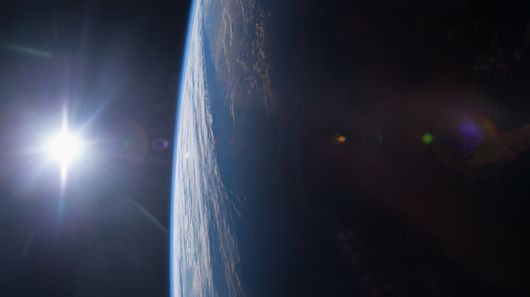Researchers say Earth is entering a sixth mass extinction event
By Anthony Wood
June 21, 2015

A research team says highly conservative estimates prove we are entering a sixth mass extinction event (Credit: NASA/Terry Virts)
While there is still much conjecture about the causes of some mass extinctions, it is generally believed that they can occur when a biosphere under long-term stress is subjected to a short-term shock. In 1982, Jack Sepkoski and David M. Raup published a paper identifying five mass extinction events throughout Earth's history. Now a team of researchers claims that we are entering a sixth mass extinction event, which threatens our very existence.
As ever more species face extinction, we lose the vital ecosystem services they provide, such as honeybee crop pollination. For its continued existence, mankind is reliant upon an untold plethora of species that maintain the status quo. As they disappear, that existence becomes increasingly fragile.
The paper entitled Accelerated modern human–induced species losses: Entering the sixth mass extinction, which was co-authored by Paul Ehrlich, a Professor of Population Studies in biology and senior fellow at the Stanford Woods Institute for the Environment, draws on fossil records of vertebrate species and an abundance of data from other sources, combining them to create a baseline extinction rate for periods when there was no mass extinction event underway. Predicated on this baseline, the researchers were able to estimate that the current rates of vertebrate extinction is up to 114 times greater than that of the baseline.
According to the Union for Conservation of Nature, at this point roughly 41 percent of amphibian species and 26 percent of mammal species are in serious danger of extinction. Alarmingly, extinction rates are now at their highest point since the Cretaceous-Paleogene extinction event some 66 million years ago.
The paper's authors stress that their findings are conservative in nature, and that the reality of the situation could be much worse. While conducting the study, the researchers even set the baseline extinction rate at twice the value of estimates widely used in previous analyses. Amongst the causes for the increased extinction rates are mankind's destruction of animals' natural habitats, and carbon emission driven climate change.
According to Ehrlich and his colleagues there is still hope, but in order to avoid dire consequences, we must embark upon a comprehensive regime of wildlife and habitat conservation. The researchers also warn that the window for change is growing ever slimmer.
"If it is allowed to continue, life would take many millions of years to recover, and our species itself would likely disappear early on," said lead author Gerardo Ceballos of the Universidad Autónoma de México.
The study has been made available in the online journal Science Advances.
The video below, courtesy of Stanford University, highlights key aspects of the research.
Source: Stanford University
copyright © Gizmag 2003 - 2015
http://www.gizmag.com/earth-sixth-mass-extinction-event/38116/